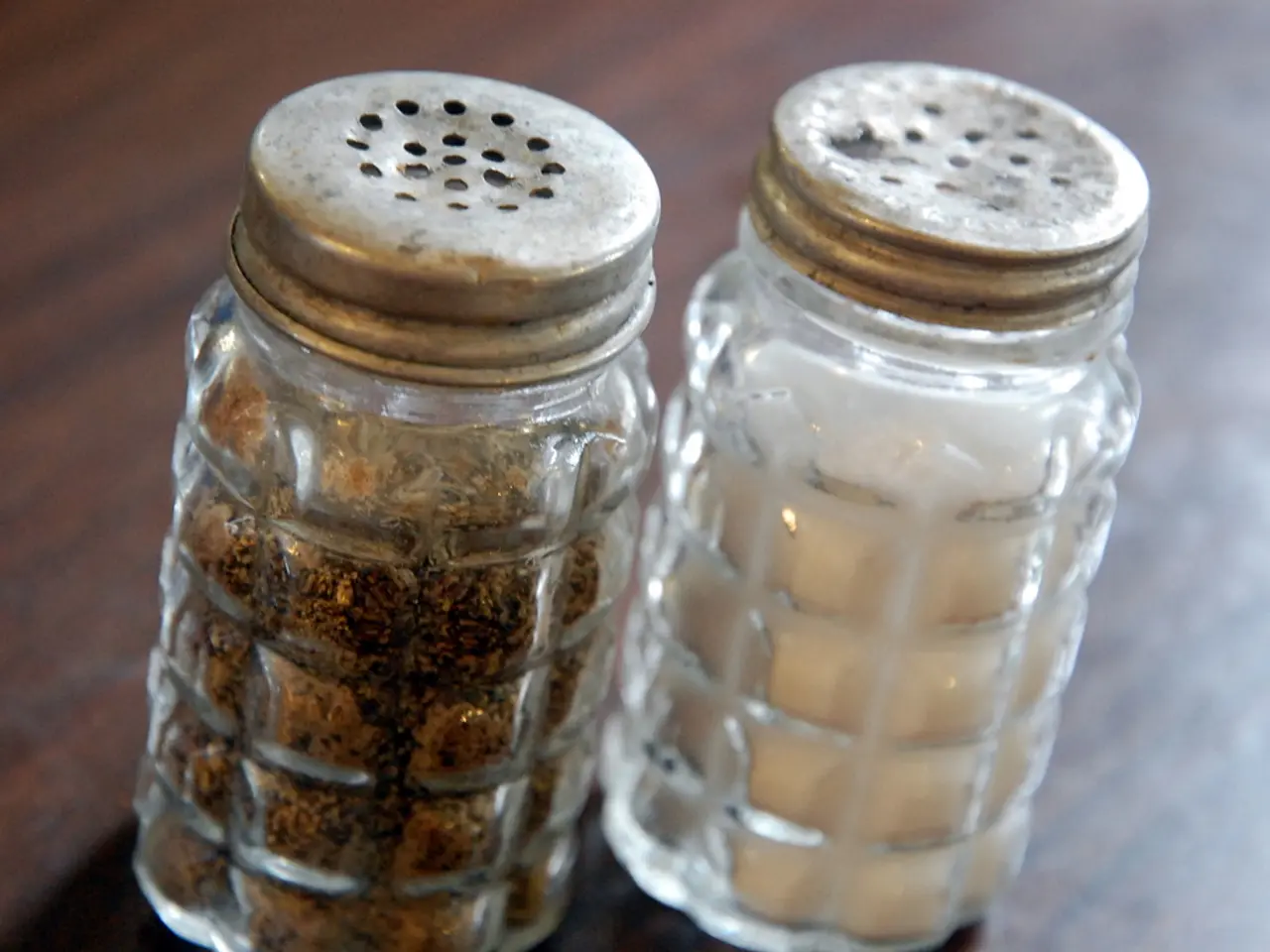Excessive Salt Consumption in India: why the world health organization's guideline is being disregarded and its implications as a hidden health hazard
In a bid to combat the alarming levels of salt consumption in India, the Indian Council of Medical Research's National Institute of Epidemiology (ICMR-NIE) has highlighted the need for a significant reduction in salt intake. The average Indian's salt consumption far exceeds the World Health Organization’s (WHO) recommended limit of less than 5 grams per day (about one teaspoon), with urban areas consuming around 9.2 grams and rural areas about 5.6 grams daily, and even reaching 11 grams nationally.
The ICMR has proposed practical strategies to reduce sodium intake and lower risks of hypertension, stroke, heart disease, and kidney disorders. These include limiting the use of added salt during cooking and at the table, avoiding or limiting high-salt processed and packaged foods, using low-sodium salt substitutes, structured counseling through health workers, and public awareness campaigns.
Reducing the amount of salt added while preparing meals and avoiding extra salt at the dining table can help significantly. Many popular Indian snacks such as pickles, papad, namkeen, biscuits, chips, instant noodles, bread, and canned goods contain excessive hidden salt. Opting for fresh, minimally processed foods is a healthier alternative.
The use of low-sodium salt (LSS), which replaces some sodium chloride with potassium or magnesium, has been shown to reduce blood pressure by an average of 7/4 mmHg. However, awareness and access need improvement, as they are not widely available and are more expensive than regular salt.
ICMR's community-led salt reduction study, Project Namak, is being conducted in Punjab and Telangana. Health workers at Health and Wellness Centres are delivering structured salt reduction counselling, emphasizing community involvement and education to change habits effectively.
The ICMR's #PinchForAChange campaign promotes simple, actionable messages encouraging people to use less salt — “one pinch at a time” — to restore dietary balance and improve cardiovascular health.
Excess levels of sodium are associated with 1.89 million deaths each year worldwide. By adopting these measures — cutting added salt, avoiding salty snacks and processed foods, considering low-sodium alternatives, and supporting community education programs — Indians can significantly reduce their sodium intake and thus lower the incidence of hypertension, strokes, and other related health risks.
In essence, reducing sodium in the Indian diet starts with awareness and small changes in everyday cooking and eating habits, supported by wider public health initiatives from ICMR to sustain long-term improvements. The ICMR-NIE warns that hidden salt is fueling a real risk in the Indian diet, and the WHO supports the use of low-sodium salt to ward off these health risks. However, LSS is not recommended for people with kidney disease or those on potassium-restricted diets.
- The ICMR's #PinchForAChange campaign encourages people to use less salt, aiming to improve cardiovascular health and lower the incidence of hypertension, strokes, and other related health risks by adopting measures like cutting added salt, avoiding salty snacks and processed foods, considering low-sodium alternatives, and supporting community education programs.
- In a bid to combat the health risks associated with high salt consumption, the ICMR's community-led salt reduction study, Project Namak, is being conducted in Punjab and Telangana, where health workers at Health and Wellness Centres are delivering structured salt reduction counselling, stressing community involvement and education to change habits effectively.
- Though the use of low-sodium salt (LSS) has been shown to reduce blood pressure and is advocated by the WHO to ward off health risks, its awareness and access need improvement as they are not widely available and are comparatively more expensive than regular salt, making it unsuitable for people with kidney disease or those on potassium-restricted diets.




